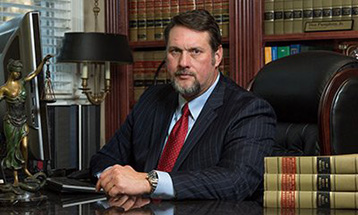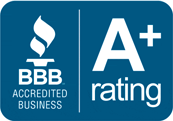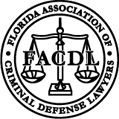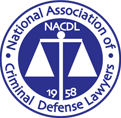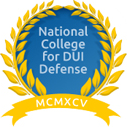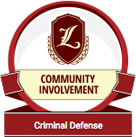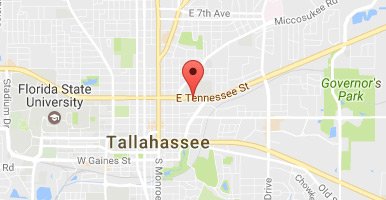- DUI
- Criminal Defense
- Florida DUI
- Traffic Offenses
- Drug Charges
- Marijuana Charges
- Violent Crimes
- Domestic Violence
- Temporary Injunctions
- Weapons Charges
- Theft Crimes
- White Collar Crime
- Juvenile Offenses
- Sex Crimes
- Violation of Probation
- Early Termination of Probation
- Seal or Expunge Criminal Record
- Criminal Appeals
- US Federal Offenses
- Misdemeanor Charges
- Felony Charges
- Co-Defendant Cases
- College Student Defense
- College Student Hearings
- FSU Students
- FAMU Students
- Florida Panhandle Arrests
- Extradition to Florida
- Bench Warrants / Warrants
- Emergency Bond Hearings
- Gambling Charges
- Drone Arrests
- Marsy’s Law
- UAS Infractions
- Introduction of Contraband
- Lying to Police
- Locations
- Case Results
- Our Firm
- Media
- Resources
- Blog
- Contact Us
Allison Mack’s Lenient Sentence for Her Role in Nxivm Cult – How Coercion is an Important Factor to Be Considered When Punishing “Bottoms” of Trafficking Rings
July 12, 2021 Don Pumphrey, Jr. News & Announcements Social Share
Nxivm is a company created by Keith Raniere that offered self-improvement workshops that promised “a path to happiness [by] seducing wealthy people who felt they lacked a higher purpose in life.”[1] Raniere was hailed as “an elusive, god-like savant within the company” who could cure anxieties and conditions.[2] In reality, this self-help program was a fraud scheme and sex cult centered around abusing his “subjects” mentally and physically, ultimately breaking them down psychologically and forcing many women into sex slavery.[3] The cult practices even included branding some women with his initials in a secret ceremony. In 2019, Raniere was convicted by a federal jury of racketeering, racketeering conspiracy, sex trafficking, attempted sex trafficking, sex trafficking conspiracy, forced labor conspiracy and wire fraud conspiracy.[4] He was sentenced to 120 years in prison and fined $1,750,000.[5] However, Raniere didn’t work alone, as women who followed him would help recruit and groom other women for him to sexually abuse. Allison Mack, a Hollywood actress, was one of these women. Last month she was sentenced to 36 months for racketeering and 36 months for racketeering conspiracy, which will be served concurrently and then followed with 3 years of probation.[6] The Court also imposed a fine of $20,000.[7] Under advisory sentencing guidelines, “Mack would have faced between 14 and 17 ½ years behind bars, [however], her defense team argued that probation or a sentence [of] home confinement [was] more appropriate, and prosecutors agreed that any prison term should be below the guidelines range because of her cooperation” with authorities.[8] By providing information and recordings to prosecutors, Mack was given a lenient sentence that reflected that she was also a victim who was coerced and abused by Raniere. However, this leniency under the law is very rarely seen when victims aid their perpetrator in the victimization of others.
The Role of “Bottoms” & the “Victim-Perpetrator” Dilemma
Human sex trafficking is an organized business that has a hierarchy system similar to that of other criminal organizations.[9] Trafficking operations with many victims often have a “bottom,” defined as a girl who was trafficked and victimized herself and has been with the trafficker so long that trust has been built between them. The role of a bottom can include “collect[ing] the money from the other girls, discipline[ing], seduc[ing] unwitting youths into trafficking, and handl[ing] the day-to-day business for the trafficker.”[10] As a result, “a troubling dichotomy between the roles of victim and perpetrator plague victims of human trafficking” who “engage in criminal conduct during the course of their trafficking that in some ways relates to their own victimization but also violates state or federal law.”[11] As a result of this “victim-perpetrator” dilemma, “distinguishing between varying degrees of coercion and the trafficker’s role in the criminal conduct of his victims presents of the most challenging problems for law enforcement to address”.[12]
The Role of Coercion
Elements of human trafficking include an act, a means, and an intended purpose. The most imperative element is “means,” because it has to do with consent, and most often includes threat, use of force, coercion, deceit, and abuse of power. It may be difficult to fully grasp the power that coercion plays in turning a victim into someone who aids the perpetrator, leaving the general public reluctant to show bottoms any mercy when it comes to sentencing. However, the role that power coercion and psychological manipulation play is significant. Traffickers often recruit runaways or girls looking to get away from abusive situations and offer them what appears to be a safe haven. Some traffickers “prefer to pursue what they call “throw-aways” because, unlike runaways, no one is looking for them.”[13] These girls, who are on average 12 years old, are first groomed to trust their trafficker by being provided food, shelter, and affection before the process of exploitation begins. Once trust is established, the trafficker will threaten the victim or her family in congruence with physical abuse or forced behavior to “tear down the victim’s self-worth and leave her dependent and fearful of her trafficker.”[14] As time progresses, victims begin to think they are criminals themselves and are taught to distrust law enforcement officers and are “persistently reminded of the lie that they are just as culpable as their trafficker.”[15] With elaborate rings that involve numerous victims, a hierarchy is naturally established as victims “learn to compete with one another to gain the trafficker’s approval, to demonstrate their loyalty, or to escape punishment,” a system highly beneficial to the trafficker because it “prevents dissension among the sexually exploited.”[16] The practice of stripping girls of their identity and individuality is often done by renaming them, preventing them from contacting their family, and branding them.[17] These are all mechanisms used to distort their reality and make the women feel like they belong in the life of abuse and manipulation they have grown accustomed to.[18] Sadly, drugs and alcohol are also used as incentives, as traffickers will get their victims addicted to intoxicants as a means of coercion.
Safe Harbor Laws
Safe harbor laws are state-specific laws that have been enacted to help shield trafficking victims from criminal prosecution for their prostitution-related offenses.[19] The two main goals of safe harbor laws include: “(1) to provide legal protection to those forced, compelled, or induced to commit a crime, and (2) to provide ready access to necessary services such as psychological and medical treatment, housing, and rehabilitation services.”[20] However, many of these laws fall short in truly protecting the victim because they limit the scope of protection to children who have been victims of sexual exploitation. In addition, the law is either difficult to assert, contains stringent eligibility requirements, or is merely reactionary–meaning that the remedy is only offered after the victim exists in the criminal justice system as a criminal.”[21] Furthermore, many safe harbor laws only cover prostitution related offenses, but fail to recognize that coercion also plays a role in other crimes that victims may commit. Unfortunately, a trafficker’s coercion is “not limited to prostitution; it is equally strong regardless if the victim is forced to perform sexual acts or whether she is forced to steal from a customer to meet her trafficker’s daily quota, commit tax evasion, or violate immigration law.”[22] By allowing survivors to be prosecuted for offenses that make it impossible for them to get a job, a loan, public housing, or an education, they will never win the battle against the trauma that transcends into their life as a survivor.
Florida’s Safe Harbor Act & How it Drastically Falls Short
Florida’s Safe Harbor Act of 2012 requires that prostituted minors be “removed from delinquency or criminal court proceedings and diverted instead to social services, such as psychological counseling or long-term housing.”[23] This Act does not decriminalize prostitution for minors or make any substantive changes to its implemented prostitution statutes, but serves as a “legislative compromise [that gives] law enforcement the discretion of either arresting and detaining the prostituted minor or delivering him or her directly to a safe house.”[24] Therefore, although the Act hints that minor victims of sex trafficking should be looked at as dependents in need of social services rather than delinquents who should be adjudicated, law enforcement is not mandated to give them this leniency under the law. House Bill 545, passed in 2016, provided some protections against the shortcomings of Florida’s Safe Harbor Act, as it stated that minors cannot be charged with specified prostitution offenses. Despite this additional protection, Florida’s Safe Harbor Act must still be drastically altered to understand the coercion and complexities and underlie the experience of both minor and adult sex trafficking victims. Florida’s Safe Harbor Act must explicitly provide legal protection to all sex trafficking victims that are forced to commit any crime, not just prostitution-related offenses, as “limiting safe harbor protection to only [those] offenses adversely impacts the recovery of victims and severely discredits our understanding of the depth of a traffickers coercion.”[25]
Society’s Reaction to Mack’s Sentencing Speaks Volumes
Although Mack was a victim in Raniere’s elaborate scheme, it is apparent that she aided in the victimization of others which is undoubtedly morally reprehensible. Upon her sentencing, social media platforms erupted in disgust and indignation that she was given such a moderate sentence. Today, society tends to recognize sex trafficking for the problem it is, however, the lack of empathy towards Mack brings forth a detrimental issue that is mirrored in Florida’s Safe Harbor Act and other state laws alike – there is a dangerous lack of understanding and empathy when it comes to grasping the role coercion plays in the experience of adult sex trafficking victims. Until we extend grace to such victims who broke the law in order to survive their abuse, the laws that are explicitly meant to protect them will continue to fall short.
This article was written by Sarah Kamide
*This article is intended purely for informational purposes and does not constitute legal advice*
[1] Nicole Hong and Sean Piccoli, Keith Raniere, Leader of Nxivm Sex Cult, Is Sentenced to 120 Years in Prison, The New York Times (Oct. 27, 2020), https://www.nytimes.com/2020/10/27/nyregion/nxivm-cult-keith-raniere-sentenced.html (last updated Nov 27, 2020).
[2] Lauren Kranc, How NXIVM Seduced Hollywood Stars and America’s Most Powerful Elite into a Barabaric ‘Sex Cult’, Esquire (June 30, 2021), https://www.esquire.com/entertainment/tv/a33658764/what-is-nxivm-sex-cult-celebrities-stars-the-vow-hbo-true-story/.
[3] Id.
[4] NXIVM Leader Keith Raniere Sentenced to 120 Years in Prison for Racketeering and Sex Trafficking Offenses, The United States Attorney’s Office Eastern District of New York (Oct. 27, 2020), https://www.justice.gov/usao-edny/pr/nxivm-leader-keith-raniere-sentenced-120-years-prison-racketeering-and-sex-trafficking.
[5] Id.
[6] Ex-‘Smallville’ Actress Allison Mack Sentenced to 3 Years in NXIVM Sex Cult Case, NBC New York (June 30, 2021, 1:16 PM EST), https://www.nbcnewyork.com/news/local/actor-allison-mack-faces-sentencing-in-nxivm-sex-slave-case/3131894/.
[7] Id.
[8] Id.
[9] Amanda Walker-Rodriguez and Rodney Hill, Human Sex Trafficking, FBI Law Enforcement Bulletin (Mar. 1, 2011), https://leb.fbi.gov/articles/featured-articles/human-sex-trafficking.
[10] Id.
[11] Matthew Myatt, The “Victim-Perpetrator” Dilemma: The Role of State Safe Harbor Laws in Creating a Presumption of Coercion for Human Trafficking Victims, 25 Wm. & Mary J. Women & L. 555 (2019), https://scholarship.law.wm.edu/wmjowl/vol25/iss3/4.
[12] Id.
[13] Id.
[14] Id.
[15] Id.
[16] Id
[17] Id.
[18] Id.
[19] Id.
[20] Id.
[21] Id.
[22] Id.
[23] Janelle Zabresky, Creating a Safe Harbor for Florida’s Children: An Overview of Florida’s Legislative Evolution in Domestic Minor Sex Trafficking, 40 Fla. St. U. L. Rev. 415 (2013), https://ir.law.fsu.edu/cgi/viewcontent. cgi?article=1012&context=lr.
[24] Id.
[25] Myatt, supra note 11.


